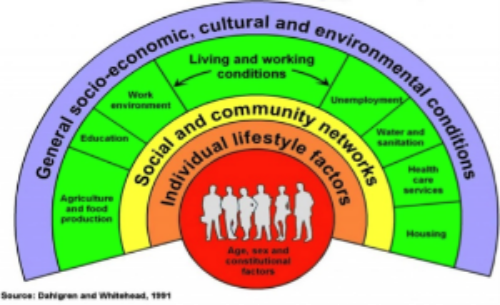~Written by Kelly Ann Hanzlik (Contact: kelly_hanzlik@hotmail.com)
According to the World Health Organization, 28,616 people contracted Ebola and 11,310 lives were lost during the Ebola epidemic. After so many lives lost and the hopeful, but understandably tentative countdown of Ebola free days continues once again in West Africa, it is imperative that we take a moment to consider what we learned from the devastating and tragic epidemic.
I spoke with Dr. Ali S. Khan, former senior administrator for the Centers for Disease Control and Prevention, former Assistant Surgeon General, and current Dean of the University Of Nebraska College Of Public Health. He noted initially, that there is always the risk of importation of cases; that is how it started he reminds us. He elaborated further that the epidemic “changed the response from the WHO and caused a change in political focus by the nations involved that will affect future outbreaks and ensure native capabilities, as well as link them to the global response.” He also noted that new medical counter measures, such as vaccines and related therapeutics, were also the result of the Ebola impact. When asked about what we learned, he did not hesitate. “The first thing was a new vaccine that permits a novel prevention strategy using ring vaccination to prevent spread and new cases. The second is the new monoclonals and antivirals for treatment.” He also noted the better understanding of the viral progression and clinical diseases that will influence options for acute treatment and follow up of convalescents.
Ebola has provided us with a virtual plethora of opportunities to learn about the disease, its treatment and control, as well as the control of other infectious illnesses through our attempts to prevent its spread as well as through our failures, and successes. We gained valuable treatment modalities and tactics that will likely be used in future outbreaks of Ebola, as well as many other infectious diseases.
Ebola taught us other things too. It has been some time since global health has taken center stage. Ebola changed that. During the epidemic, one could not watch the news or go through a day without hearing an update on the latest development in the Ebola crisis. Although other infectious diseases like Plague, Polio, AIDS, SARS, H1N1, Cholera, and now Zika have captured the world’s attention, few diseases have made such an intense impact, nor caused the uproar and fervor that Ebola elicited. Ebola reminded us that global health is public health and affects us all, and as such, deserves to be a priority for national and international focus and funding for everything from vaccine development and research, to capacity for response locally, nationally, and internationally. Global health has teetered on the edge of public awareness, and remained a quiet player in the competition of priorities in national budgets. Today, it is abundantly clear how vital this sector is to each nation’s, as well as the world’s health, safety, success and even its survival.
Another effect from the Ebola crisis was the opportunity to educate people about public health and the transmission of infectious disease. Through education, public health officials were able to promote behaviors that ensured the safety and health of the public. It is stunning that in this day and age, we persist in so many behaviors that put us and those we interact with at risk. The discrepancy in what we say we will do, and what we are actually willing to commit to and take action on, looms large. Persisting low vaccination rates and the prevalence of infectious diseases such as sexually transmitted diseases, measles, pertussis and influenza show this. Ebola offers yet another opportunity to demonstrate the connection between our behaviors and our risks and disease.
Ebola also showed us that many nations continue to lack sufficient financing, infrastructure, facilities, support and medical staff to treat their own populations. Endemic conditions like malaria, and neglected tropical diseases like Guinea worm disease, Yaws, Leishmaniasis, Filariasis, and Helminths, as well as other conditions continue to affect millions globally. Maternal and childhood morbidity and mortality rates remain deplorable as well. And millions of children around the world continue to suffer and die of malnutrition and disease before they reach the age of five. This is unacceptable, especially because proper treatment and cures for these conditions exist. Ebola also highlighted the need for treatments for chronic non-infectious conditions as well.
Moreover, Ebola clearly demonstrated the enormous need that remains for sufficiently trained medical professionals and healthcare staff to provide adequate care for many populations throughout the world. The loss of so many extraordinary and heroic staff that dedicated their lives to helping others in need under the most daunting and challenging of circumstances was devastating to those whom they served, and must not be in vain.
Additionally, Ebola provided us with yet another chance to relearn lessons about the role of safety in giving aid to others in need. We learned that we cannot just rush in with aid, but must recall the basics that every first responder and medical student must learn: Ensure scene safety before giving care, and first do no harm. Ebola showed us the necessity to strategize and prepare to give care by utilizing personal protective equipment. It also reminded us very quickly that we could indeed do harm, and worsen the epidemic when we acted without first assessing the situation and ensuring proper protection and preparation.
So, it remains to be seen just how much we will learn from Ebola. Will we learn from our mistakes? Will we take the global view in the future, or the narrow one? Will we truly live by the motto of the Three Musketeers and be "one for all and all for one", or persist in "it's all about me"? Only time will tell.


